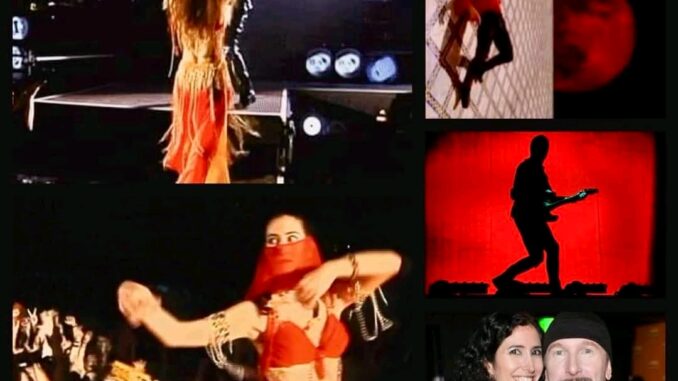
“Mysterious Ways” Turns 34 — The Timeless Magic of U2’s Sonic Seduction
It’s been 34 years since U2 released “Mysterious Ways,” yet the song still sounds like it could have dropped yesterday — or perhaps tomorrow. That’s the beauty of U2 at their most experimental: they captured lightning in a bottle, a sound so fluid and forward-thinking that it remains ageless.
Originally released in December 1991 as the second single from Achtung Baby, “Mysterious Ways” marked a turning point in U2’s evolution. The band that once marched under the anthemic banners of The Joshua Tree had suddenly reinvented itself — drenched in groove, distortion, and sensual rhythm. The song wasn’t just another hit; it was a declaration that U2 could shed their old skin and still dominate the future.
The Birth of a Mystery
The track’s genesis was far from smooth. In its early incarnation, it was a rough improvisation called “Sick Puppy.” The band members were unconvinced, except for one key element — Adam Clayton’s sinuous bassline. That low, hypnotic groove became the skeleton upon which the entire song was built.
For weeks, the band struggled to construct something meaningful around it. Then came the breakthrough: The Edge began experimenting with a Korg A3 effects unit, sculpting the swirling, wah-soaked guitar textures that would define the song’s sound. The resulting riff was otherworldly — part funk, part psychedelia, part something entirely new.
What emerged was a fusion of industrial rhythm, soul, and spiritual longing — a sound that transcended labels. When it finally clicked, “Mysterious Ways” became not just a standout on Achtung Baby, but one of the defining tracks of U2’s entire career.
The Message Behind the Mystery
Lyrically, the song is pure Bono — seductive, spiritual, and paradoxical. “Mysterious Ways” isn’t about one woman but about the idea of womanhood itself — how women enchant, inspire, and challenge men. Bono once explained:
> “At times I do tend to idealize women. It’s easy to fall into the trap of separating them into angels and devils for the sake of the drama. But there’s never anything anti-women in what we do. Our songs are written from a man’s point of view — flawed, searching, human.”
That balance of reverence and tension lies at the heart of the song. Its lyrics — “To touch is to heal, to hurt is to steal / If you wanna kiss the sky, better learn how to kneel” — intertwine sensuality and spirituality, suggesting that surrender and humility are the paths to transcendence.
The Dance of Sound and Vision
When U2 launched their Zoo TV Tour in 1992, the song became a central part of their live transformation. The performance featured a belly dancer moving across the stage — a living embodiment of the song’s seductive rhythm. At first, the dancer was a performer hired for the tour. But after the first leg, Morleigh Steinberg, a choreographer who had worked with the band, stepped into the role. She later became The Edge’s wife, proving that the song’s mysterious pull extended far beyond the stage.
Why It Still Sounds Like Tomorrow
Listening today, “Mysterious Ways” defies time. The production — handled by Brian Eno and Daniel Lanois — remains crisp, elastic, and ahead of its era. Its blend of analog warmth and digital experimentation feels as fresh in 2025 as it did in 1991. In an age of hyper-processed pop, its organic pulse and spiritual groove stand apart.
It’s a song that lives between contradictions: sensual yet sacred, grounded yet ethereal. It invites you to move your body and question your soul. Few tracks manage that balance, and fewer still retain it across decades.
A Legacy That Keeps Moving
More than three decades on, “Mysterious Ways” continues to pulse through U2’s setlists and the hearts of fans. It reminds listeners that great songs evolve with time — they reveal new meanings as the world changes.
When Bono croons “She moves in mysterious ways”, he’s not just singing about a woman; he’s describing art itself — unpredictable, eternal, and alive.
Thirty-four years later, the song still moves — and so do we.
Be the first to comment